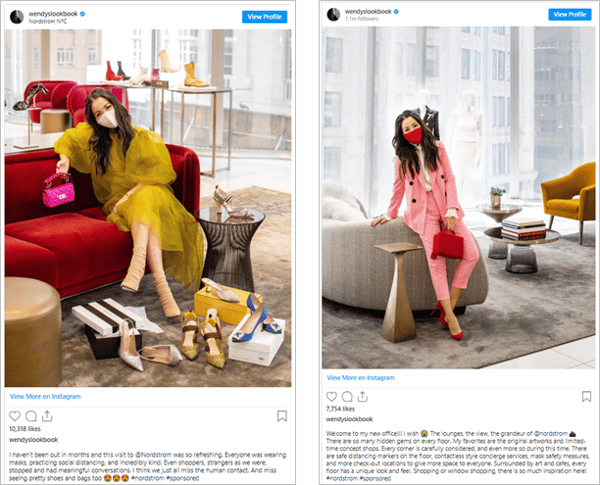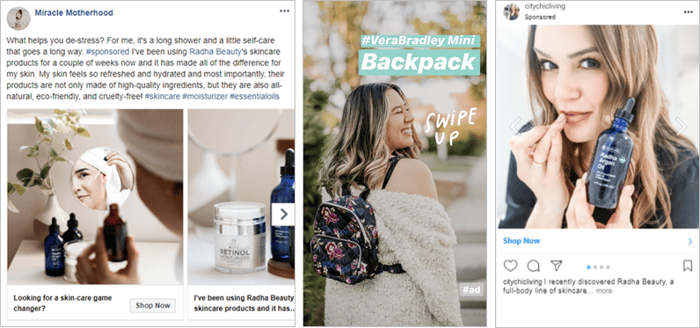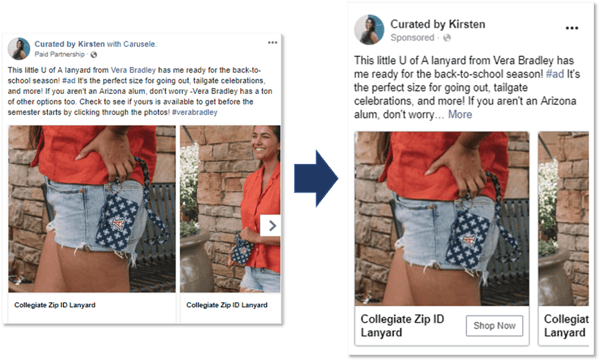Last month Nordstrom made headlines as they began working with influencers to promote in-store shopping experiences. The trend has continued to grow as other brands, such as Macy’s, Kohl’s, and Gap, have also explored this avenue in an attempt to increase their retail sales. But with the recent changes in consumer purchase behavior, is it worth pursuing these style campaigns, or should retailers instead focus their influencer marketing strategy on online shopping experiences?
Should Influencers Push In-Store or Online Messaging?
The Current Consumer Landscape
If we're going to be objective about which shopping experience your brand should prioritize, let's dive into some data about consumers.
- Still Hesitant to Venture Out of Home: 73% of people are not currently engaging in out of home activities even after government restrictions eased.
- Convenience Over Loyalty: About 36% of consumers stated they now purchase a variety of brands, and 46.2% of consumers say they are less loyal.
- Those Going In-Store Prefer Contactless Experiences: 47% of planned shoppers said they’ll use options to buy online, pickup in store/curbside pickup.
- Online Shopping Habits Will Continue: 82% of consumers say they will continue to shop online, even once stores are fully re-opened.
The data above makes it obvious, prioritizing online shopping through the rest of 2020 (and even into the first half of 2021) is an essential move brands and retailers need to take. Here are some helpful tips you can use to adapt your influencer marketing strategy to drive those online sales, both for the upcoming holiday season, and moving into 2021.
Optimizing Influencer Marketing for Online Sales
Leverage the Right Types of Content
Different types of content elicit different reactions from people, so it’s important that you task influencers to create content that drives audiences to take an action that aligns with your objective (and that it’s on the right channel!). If you're focused on online sales, avoid long-tail content, or at least be prepared to see a slow drip from long-form assets. Instead, focus on assets that allow you to include direct links.
Enable Shoppable Features
Facebook and Instagram shops have undergone some recent updates and are currently the most popular shopping features available. Brands can leverage native checkout, allowing the user to buy directly off Facebook, push shoppers to your brand's website for purchase, or integrate third-party apps, such as Shopify. Unfortunately, not all accounts have access to these capabilities.
Utilize Channels That Enable Tracking
Not all channels are built to allow all types of tracking. For example, Instagram and Pinterest are the most difficult, especially when it comes to organic, to measure clicks. Instagram content can test out the “link in bio” and “swipe up” stories, but otherwise isn’t built to drive traffic directly to your site via a link click and user behavior on the platform confirms this. Similarly with Pinterest, the network now kicks back tracked links, or will mark your content as spam and push it down in the algorithm if you attempt to publish pins with link tracking appended.
Apply Conversion Optimized Messaging
In the conversion phase of the funnel, you need to give people a reason to purchase right then and there. Discounts and offers help incentivize users to take action quickly, and in a way that correlates with your campaign. Additionally, seasonal content drives a similar user behavior without having to include a discount or offer, that still pushes a quick purchase.
Optimize Top-Performing Assets with Conversion Ads
Influencer content can only go so far organically. Implement a system that allows you to see which assets are driving the most conversions and turn those pieces of content into conversion-optimized ads (note: don't just hit those boost button; create real ads with the content). This allows you to use your most effective influencer content to reach a whole new audience outside of the influencers following.
If you have any other questions or concerns about what type of messaging your influencers should use during this trying time, contact our team today and we'll work through some strategy options for you. Additionally, keep up with the latest in the influencer marketing space by subscribing to our bi-weekly e-newsletter, The Spin, using the form below.
Subscribe to The Spin
-1.png?width=504&height=360&name=Carusele%20logo%20%C2%AE%20logo%20Color%20(2)-1.png)


